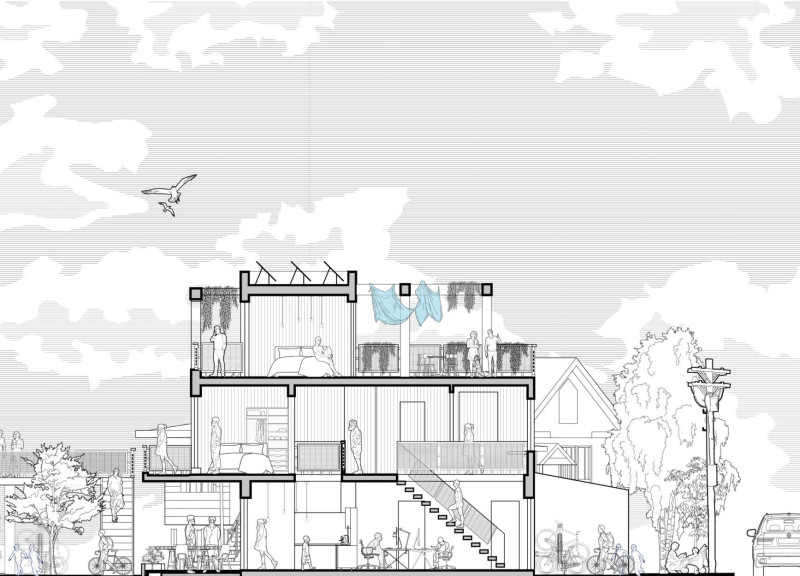5 key facts about this project
The design aims to address Melbourne’s housing affordability issue by introducing innovative infill housing solutions in the city’s middle suburbs. Located in areas with underused spaces like tennis courts and large backyards, the project intends to transform these underutilized zones into multi-family residences. The overall design concept emphasizes increasing the number of housing units while fostering community and encouraging interaction among a range of residents, from families to singles and students.
Infill Housing Potential
Maximizing the use of spare suburban spaces is at the heart of the design. By looking at tennis courts and big private yards as opportunities for new homes, it seeks to tackle housing shortages head-on. The approach questions common assumptions about property value by illustrating how these areas can not only provide homes but also contribute to community life.
Flexible Spatial Configurations
An important aspect of the design is flexibility in layout. Residential units are built around a fixed service core, allowing for different configurations that can adapt to the changing needs of residents. This modular style creates living spaces that can adjust over time, accommodating various lifestyles or family sizes, thus promoting a sustainable form of urban development.
Community Engagement Spaces
Shared areas play a significant role in the design, encouraging social connections among residents. With features such as co-working spaces, playgrounds, communal kitchens, and workshops, the layout aims to support interaction and a sense of community. These amenities are more than just facilities; they are spaces where people can come together, fostering a supportive environment for diverse residents.
Sustainability and Resource Optimization
While specific materials are not listed, the design reflects a commitment to principles of energy efficiency and low-impact living. By incorporating passive housing techniques, it aims to reduce long-term operational costs and environmental effects. Proposing an increase in housing density within established neighborhoods promotes better use of resources and infrastructure, aligning with current goals for more responsible urban growth.
The design thoughtfully brings together elements of private living and community interaction. It captures the idea of creating homes that are not only functional but also enrich the urban experience. The careful arrangement of these spaces reflects an understanding of the evolving needs of communities.



















































